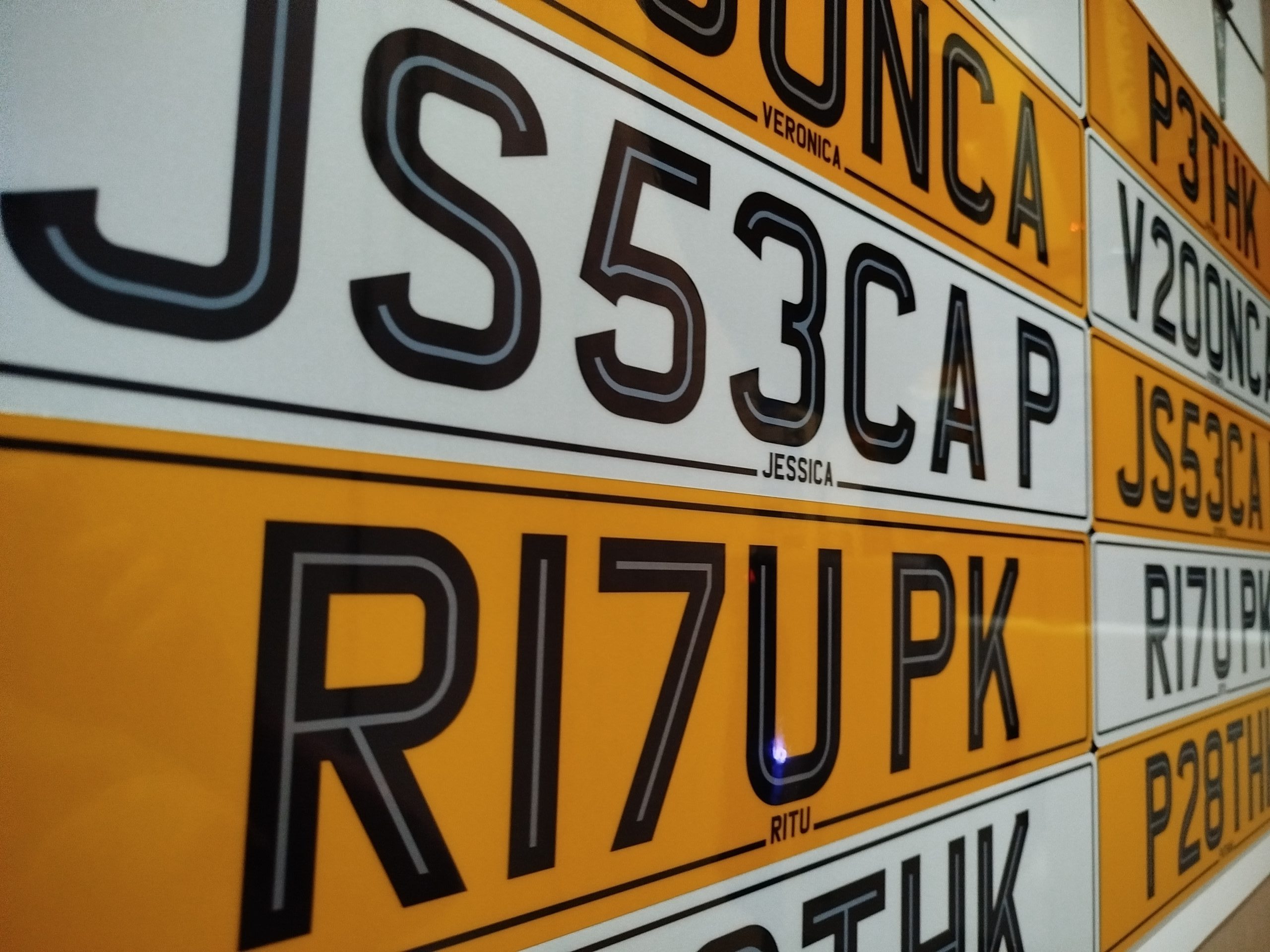
How Do Number Plates Work?

How Do Number Plates Work?
Number plates might seem simple at a glance, but there’s a few speed bumps to understanding them. Key takeaways from the get-go, they’re essential to how vehicles are identified, tracked, and legally used on UK roads.
Whether you’re buying your first car or replacing a damaged plate, understanding how number plates work helps you stay compliant with the law and avoid what can end up being pretty expensive mistakes.
In the UK, every registered vehicle must display a number plate that follows strict government regulations. The number on the plate is assigned by the DVLA and acts as a vehicle’s unique fingerprint. But the physical plate itself is something you buy.
We’ll break down everything you need to know about number plates, from what they mean and how they’re made, to when you need a new one and the difference between road number plates and show plates.
What Information Does a Number Plate Contain?
We can all agree that most number plates look like a jumbled bunch of numbers and letters. Unless their private plates, which usually spell a name or word, but we’ll get onto these later.
So yes, UK number plates might look a bit random, but they actually follow a structured format that reveals important details about the vehicle. Let’s break it down, as there’s a bit to go through!
Current Format (Post-2001 Vehicles):
So, the standard UK number plate format in the present day is: AB12 CDE, and each part carries specific information:
- First two letters – “AB” – This is the Area Code, it identifies the region where the vehicle was first registered. For example, “LA” is for London, “MA” for Manchester.
- Two numbers – “12” – Next is the Age Identifier, this simply shows the age of the vehicle. The DVLA issues two identifiers per year (March and September). So, “12” means the car was registered between March – August 2012.
- Last three – “CDE” – Okay so these are quite literally random letters that are randomly assigned to make each plate unique.
Older Formats (Pre-2001 Vehicles):
Now, for older plates, you might see the following formats:
- Prefix plates (e.g., “R123 ABC”): Where the first letter indicates the year.
- Suffix plates (e.g., “ABC 123R”): Where the last letter indicates the year.
Motorbike Plates
Motorbike plates use the same registration format but must follow different size and spacing rules. In most cases, they only display the plate on the back of the bike.
So next time you spot a plate, you’ll know exactly what you’re looking at!
Private or Personalised Plates
These often don’t follow the standard formats and may be made to look like names, words, or phrases. They’re legal as long as spacing, font, and visibility rules are followed, or they’re used on show plates only.
Number plates, when formatted correctly, are more than just identifiers, they’re a coded story of your vehicle’s history.
Why Are Number Plates So Important?
Well, number plates are important for several reasons. And if you don’t know these reasons, you might find yourself in a spot of trouble when it comes to buying and fixing them to your car or bike.
Here’s why they matter:
1. Legal Compliance
Every vehicle on UK roads must display front and rear number plates (rear only for motorcycles). These plates must meet specific standards set by the DVLA, including font, spacing, size, and reflectivity. Driving without a number plate, or with an illegal one, can result in fines of up to £1,000 – which wouldn’t be ideal!
2. ANPR and Law Enforcement
Number plates allow police and local authorities to track vehicles using Automatic Number Plate Recognition (ANPR) technology. This helps with things like catching uninsured or untaxed vehicles, locating stolen cars and enforcing speed limits and congestion charges.
All the fun stuff.
3. MOT and Insurance
Your number plate is a key part of your vehicle’s identity. If it’s damaged, unreadable, or incorrectly formatted, your car could fail its MOT. It may also bring up issues with insurance providers in the event of a claim.
4. Buying and Selling Vehicles
In 2024, global car sales reached approximately 78 million units, a notable increase from around 75.3 million in 2023. And your vehicle’s reg number links directly to its logbook, tax, insurance, and service history. So when buying or selling, your number plate is crucial for verifying the car’s background and ownership.
Basically, your number plate is your car’s ID card.
What Makes a Number Plate Legal in the UK?
For a number plate to be road-legal in the UK, it must meet strict rules set by the DVLA. These regulations ensure that all plates are easily readable by humans and ANPR systems.
Here’s what a legal number plate must include:
- Correct font: Must use the Charles Wright typeface.
- Standard size and spacing: Characters must be the correct height and width, with legal spacing between them.
- Black characters on reflective backgrounds: White background for the front plate, yellow for the rear. Both must be reflective.
- No decorative fonts or images: Only legally approved flags (like GB, ENG, SCO, etc.) and borders within regulation are permitted.
- BS AU 145e marking: This certifies that the plate meets durability and visibility standards.
- Supplier and postcode: The company that made the plate (like us at Plate Mate) must be printed on the bottom edge along with the postcode.
Exceptions for Show Plates
If you’re using a show plate (for display or off-road use), these rules don’t apply. You can customise fonts, colours, and spacing. But remember – they’re not legal for public roads.
How Do Personalised or Private Number Plates Work?
Private number plates – also called personalised registrations – let you swap the standard DVLA-issued reg with one that holds personal meaning, like initials, names, dates, or clever wordplay. But how they work in terms of ownership and legality is a bit more complex than most people realise.
You’re Buying the Rights, Not Just a Plate
When you buy a private number plate you’re purchasing the rights to display a specific registration. That registration becomes yours to assign to a vehicle, hold on retention, or transfer to someone else.
*Important note from Plate Mate: We don’t sell private registration numbers – we make the physical plates. Many customers assume they’re buying the reg itself when designing a plate. We only produce the plate once you’ve purchased your reg through the DVLA or a broker.
Where to Get a Private Plate
- DVLA offers direct sales and frequent auctions.
- Private dealers or brokers may offer rare or super unique plates.
- Marketplaces and websites dedicated to buying/selling plates.
How to Assign One
Once purchased, you can assign your reg to a vehicle online via the DVLA. You’ll need the V5C (logbook) for the vehicle, and the V750 (certificate of entitlement) for the new reg.
What Happens Next?
Once assigned, you’re legally required to get physical plates made that match the new registration – that’s where we can help.
We’ll make your plate in any legal format you need, whether it’s standard, 3D, 4D, or even a 5D acrylic design.
Where Can You Buy Number Plates in the UK?
When you need a replacement, a new set, or even a custom design, there are a few different ways to get your number plates made. Your main options include:
Registered Plate Suppliers
These businesses are authorised by the DVLA and can legally produce number plates. You’ll usually need to show ID and proof of vehicle ownership.
Online Retailers
Many UK sites (like Plate Mate!) offer fast online ordering. For road-compliant plates, some may request documentation. However, if you’re ordering from Jersey, like with Plate Mate, no documents are required.
Motor Factors and Auto Shops
You can sometimes buy plates from local garages or high street motor stores, though they may not offer customisation or next-day delivery.
Why Choose Plate Mate?
At Plate Mate, we make it quick and easy to get your new plates. Whether you’re after a standard road-compliant plate or something custom for a show or garage. We offer:
- Fast turnaround (Express 1-day UK delivery available)
- Road-compliant number plates with no hassle
- Unique customisation options through our Plate Builder
- No documentation required (thanks to our Jersey-based service)
Number Plates Are More Than Just a Legal Requirement!
While they might seem like a small detail, number plates play a crucial role in UK road safety, legal compliance, and vehicle identification. From helping police track down stolen vehicles to ensuring your car passes its MOT, number plates are essential.
Understanding how they work, what they mean, and how to stay compliant saves you from fines, legal trouble, or unnecessary hassle.
Whether you need a standard plate, a custom show plate, or a stylish 3D/4D upgrade, Plate Mate makes the process easy. We offer high-quality, road-compliant number plates, fast delivery, and zero paperwork for Jersey-based orders.
Explore our full range of number plates and build yours in minutes.
FAQs
How do Irish number plates work?
Irish plates (Republic of Ireland) follow this format: YY-County-Number (e.g. 23-D-12345).
- YY = Year of registration
- County = Initial for the county (e.g. D = Dublin)
- Number = Unique vehicle number
How do American number plates work?
Each US state issues its own number plates with its own design, format, and rules. Most include a combination of letters and numbers, often indicating the registration number, county, or expiration date.
Fun fact – a lot of American number plates are made within prisons by the inhabitants
How do British number plates work?
British plates follow this format: AA00 AAA
- First two letters = Region code
- Two numbers = Year of registration
- Last three letters = Random
They’re white at the front, yellow at the back, and must meet DVLA regulations.
How do English number plates work?
They work the same as British number plates, as they follow the DVLA rules across England, Wales, and Scotland.
How do French number plates work?
French plates follow this format: AA-123-AA. The format is nationwide (no longer region-specific) and includes a regional logo and department number on the right.
How do German number plates work?
German plates start with one to three letters for the city/region (e.g. B = Berlin), followed by a registration number. They also include a circular TÜV inspection sticker and an emissions/environmental badge.
How do Guernsey number plates work?
Guernsey plates are made up of numbers only, with no letters. They often start with a single or double digit and go up sequentially. Also, there’s no GB identifier and Guernsey plates aren’t valid on UK roads unless registered properly. Guernsey plates are black with silver characters.
How do Italian number plates work?
Italian plates follow the format AA 123 BB and are consistent across the country. They include a blue EU band with the country code (I) and don’t reference regional information anymore.
How do Jersey number plates work?
Jersey plates start with ‘J’ or more recently the DVS have issued ‘JSY’ registrations, followed by numbers (e.g. J12345). They don’t require documentation like UK plates do and are managed by Jersey’s own vehicle registration system.
How do Northern Ireland number plates work?
Northern Irish plates often include ‘I’ or ‘Z’ in the letters (e.g. ABZ 1234). Again, these plates don’t follow the mainland UK format and don’t indicate age, which makes them popular for private reg buyers.
How do Spanish number plates work?
Spanish plates follow the format 1234 ABC. There’s no regional identifier, and a blue EU band with ‘E’ for España is on the left. The numbers are issued sequentially.
How do Portuguese number plates work?
Modern Portuguese plates use the format AA 12 BB (or variations). They include a blue EU band on the left and a yellow sticker indicating the year and month of first registration.




